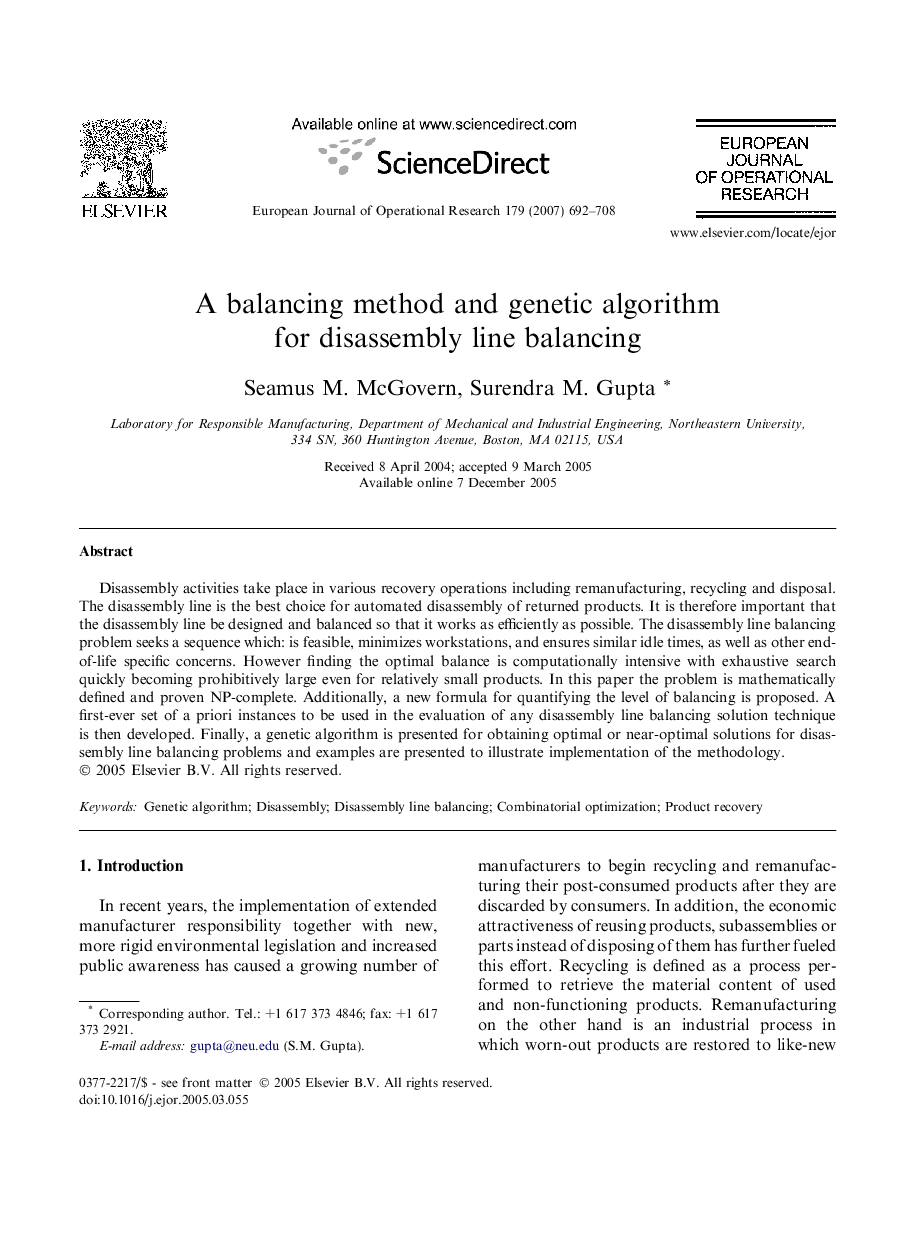| Article ID | Journal | Published Year | Pages | File Type |
|---|---|---|---|---|
| 483148 | European Journal of Operational Research | 2007 | 17 Pages |
Disassembly activities take place in various recovery operations including remanufacturing, recycling and disposal. The disassembly line is the best choice for automated disassembly of returned products. It is therefore important that the disassembly line be designed and balanced so that it works as efficiently as possible. The disassembly line balancing problem seeks a sequence which: is feasible, minimizes workstations, and ensures similar idle times, as well as other end-of-life specific concerns. However finding the optimal balance is computationally intensive with exhaustive search quickly becoming prohibitively large even for relatively small products. In this paper the problem is mathematically defined and proven NP-complete. Additionally, a new formula for quantifying the level of balancing is proposed. A first-ever set of a priori instances to be used in the evaluation of any disassembly line balancing solution technique is then developed. Finally, a genetic algorithm is presented for obtaining optimal or near-optimal solutions for disassembly line balancing problems and examples are presented to illustrate implementation of the methodology.
